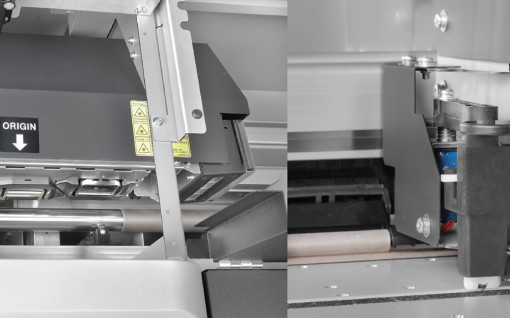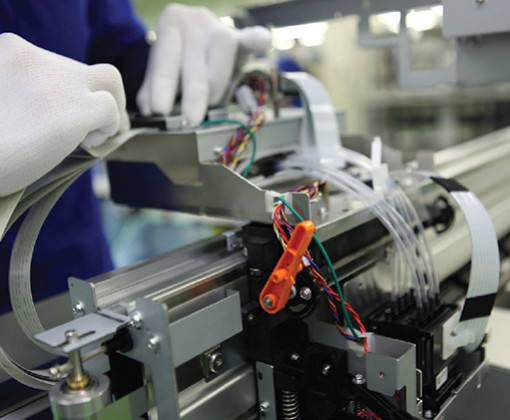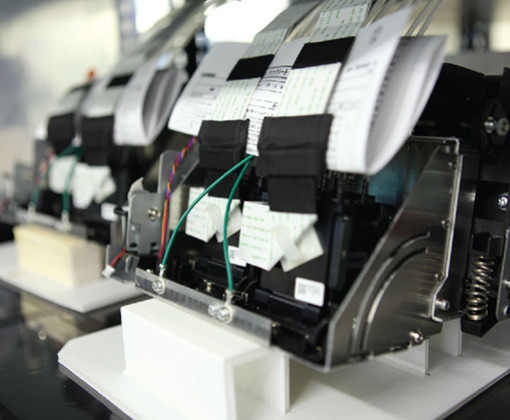Piezo Head Technology

Piezo-electric, drop-on-demand print heads were introduced into wide format printers in the 1990s and expanded the applications and opportunities for wide format users considerably. It meant that, at last, solvent and UV-cured inks originally associated with screen process printing could now be printed digitally. Thermal print heads which had previously been the only technology available for wide format printers can’t accommodate these ink types. It was a revolutionary development for the industry.
The Science

Piezo heads work by way of the expansion and contraction of a piezo crystal (usually lead zirconate titanate, known as PXT) located at the back of the ink reservoir. The crystal expands and contracts (or flexes) when an electric current is passed through it. So whenever a dot is required, a current is applied to the piezo crystal which flexes and in doing so, forces a drop of ink out of the nozzle.
As the electric current can be switched on and off instantly, the expansion/contraction of the crystal is likewise almost instantaneous, so there is far more scope for controlling dot formation than with thermal heads.
A lot of piezo heads are referred to as ‘drop-on-demand’. Drop-On-Demand heads are the type most commonly found in modern wide format printers. Drop-on-demand means that inkjet nozzles generate and project ink drops when and where they are needed to produce a mark on the media.

Piezo heads can also generate drops of variable size from the same chamber and nozzle, giving different ink densities on the media. Most can produce ink droplets as small as 1.3 picolitres. This technology gives the user ultimate ink precision for detailed work such as photography, fine art and small text because the ink droplets provide a sharper, grain-free print, with smoother tonal transitions. These are called greyscale heads.
Since print heads are built into a shuttle travelling back and forth at certain speeds and accelerations, it is not always possible to use all possible drop volumes of a print head during the print process. The reason for this is that the jetted drops are also subject to in-flight turbulence, influencing their flight path.
Advantages of Piezo versus Thermal Print Heads
No heat is used to eject the droplets. Heat can change the mechanical make-up of the ink.
Piezo heads are compatible with a wider variety of ink types and ink ingredients
The user has access to a wider number of applications
The heads are more durable than thermal heads and should be exchanged only with a low frequency. Sometimes they may even last the life time of the printer, if maintained well.
Deliver precise, variable drops, save ink wastage.
Mutoh’s History with Piezo Head Technology

At Mutoh, we have been integrating piezo drop on demand inkjet head technology in all our wide format water-based, solvent and UV digital inkjet printers ever since 1999. We know piezo inkjet technology inside out!
Key to our success has been the development of dedicated inks tuned to specific piezo heads, covering specific applications. Market leading from Mutoh ever since 2006 has been our Intelligent Interweaving (i²) technology. With this technology, ink is laid down in a ‘wave pattern’ form, delivering smooth, pin sharp and consistent output quality without compromising print speeds.
